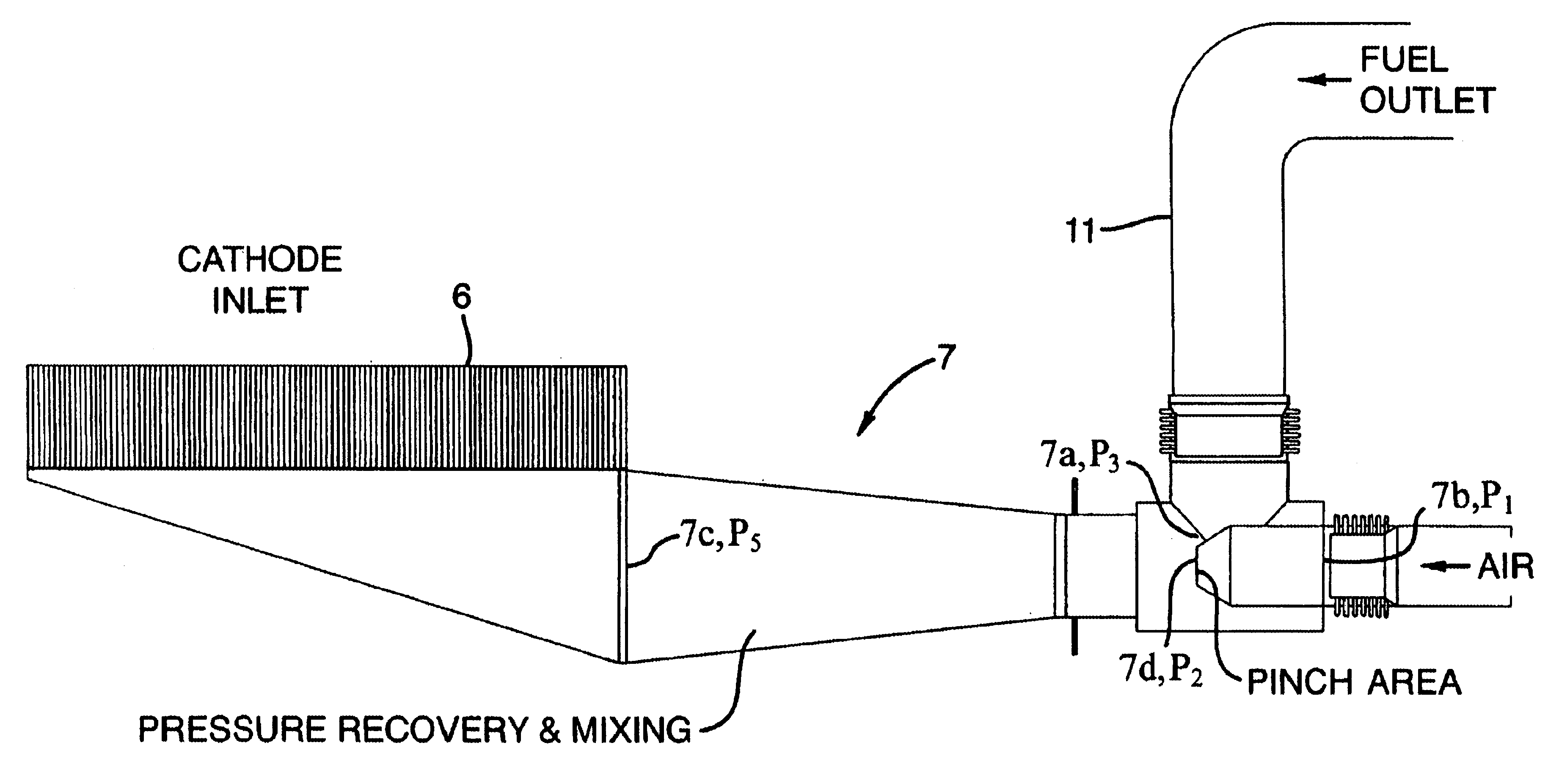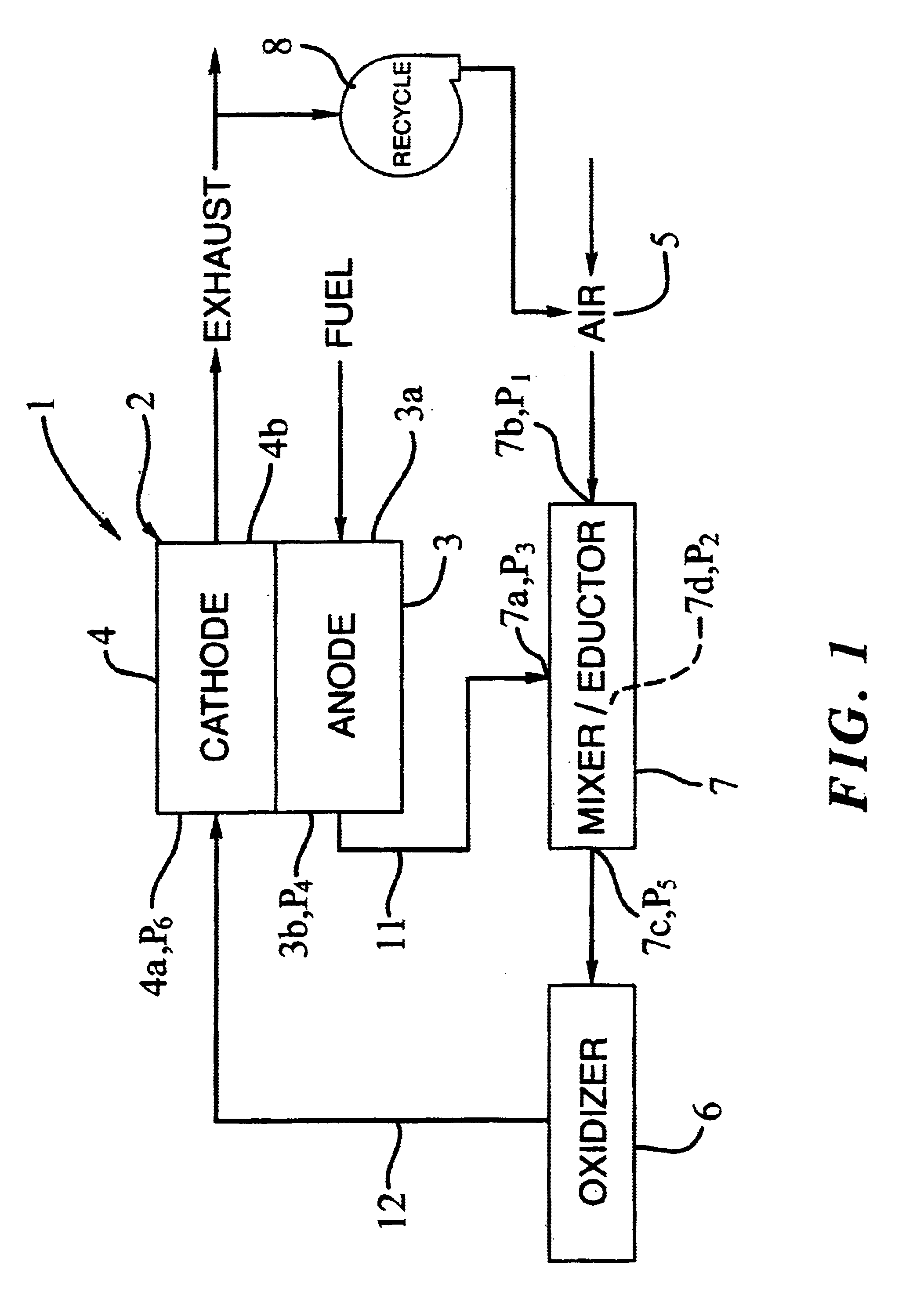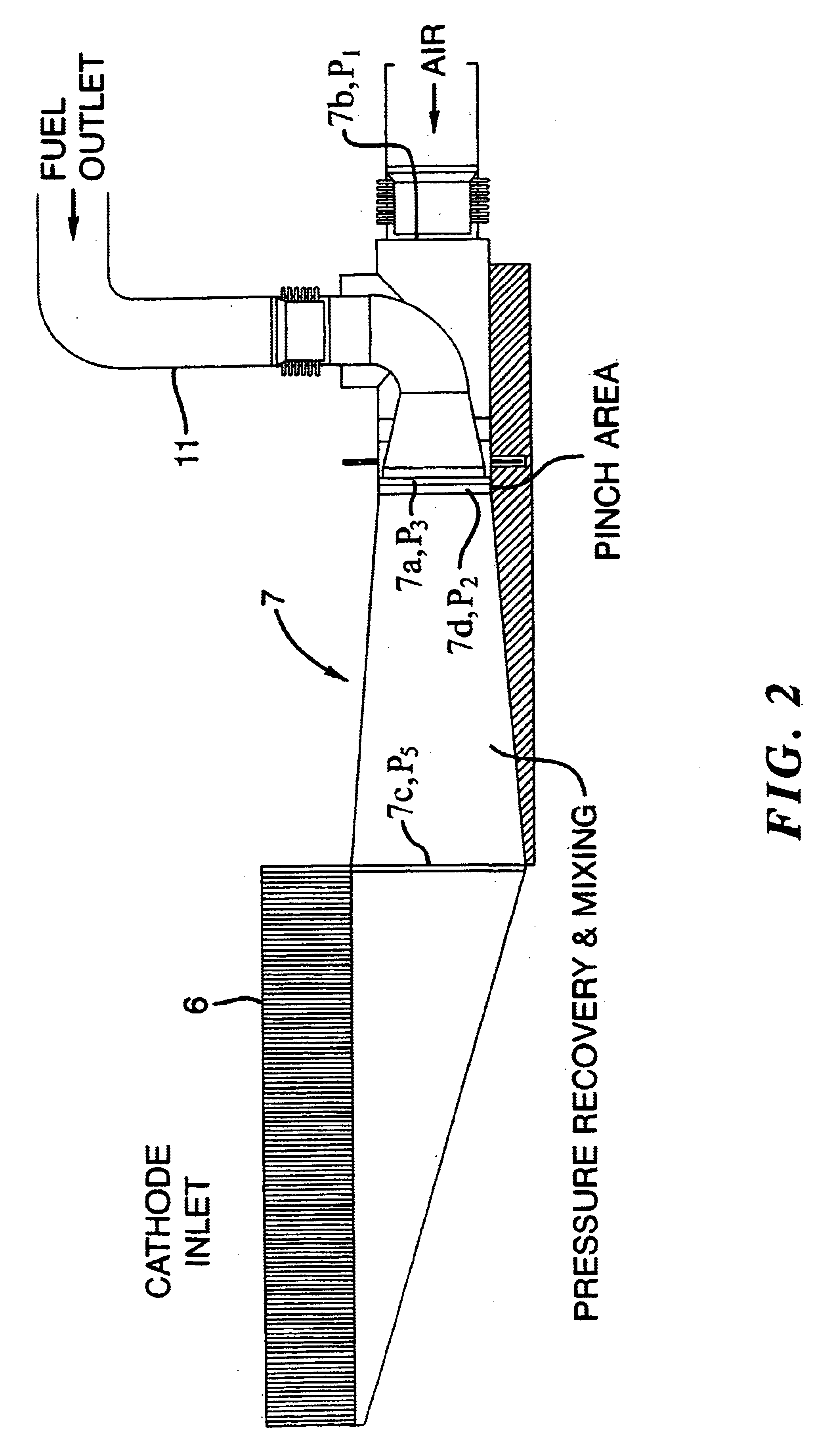Fuel cell system with mixer/eductor
a fuel cell and mixer technology, applied in the field of fuel cells, can solve the problems of increasing the cost and reliability of a commercial system, the overall complexity of the system hardware, and the cost and reliability of the recycle blower, so as to reduce the differential pressure and reduce the difference in pressure
- Summary
- Abstract
- Description
- Claims
- Application Information
AI Technical Summary
Benefits of technology
Problems solved by technology
Method used
Image
Examples
Embodiment Construction
[0021]FIG. 1 shows schematically a fuel cell system 1 in accordance with the principles of the present invention. As shown, the system 1 includes a fuel cell stack 2 having a fuel or anode-side 3 and an oxidant or cathode-side 4. The anode-side 3 includes an inlet 3a for supply of fresh fuel and an exit 3b for extraction of exhausted fuel. The cathode-side 4 also includes an inlet 4a for receiving oxidant and an exit 4b for expelling exhausted oxidant.
[0022]An oxidant source 5 supplies oxidant, shown as air, at a controllable flow rate or velocity to the system 1. The oxidant is heated by burning the oxidant in an oxidizer 6 with exhausted fuel carried by piping 11 from the exit 3b of the anode-side 3 of the stack 2. The oxidizer 6 is typically an oxidation catalyst bed. The resultant heated gas is supplied via piping 12 to the inlet 4a of the cathode-side 4 of the stack 2.
[0023]In order to keep the difference in pressure between the oxidant and fuel gases passing through the stack ...
PUM
| Property | Measurement | Unit |
|---|---|---|
| pressure | aaaaa | aaaaa |
| velocity | aaaaa | aaaaa |
| pressure difference | aaaaa | aaaaa |
Abstract
Description
Claims
Application Information
 Login to View More
Login to View More - R&D
- Intellectual Property
- Life Sciences
- Materials
- Tech Scout
- Unparalleled Data Quality
- Higher Quality Content
- 60% Fewer Hallucinations
Browse by: Latest US Patents, China's latest patents, Technical Efficacy Thesaurus, Application Domain, Technology Topic, Popular Technical Reports.
© 2025 PatSnap. All rights reserved.Legal|Privacy policy|Modern Slavery Act Transparency Statement|Sitemap|About US| Contact US: help@patsnap.com



